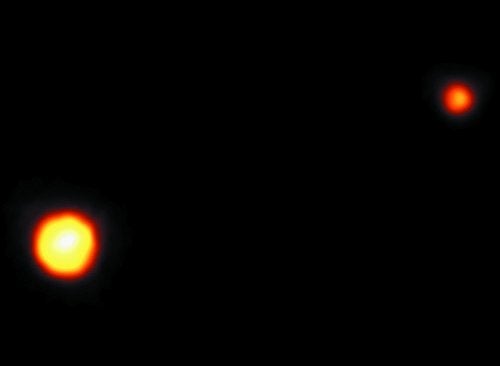Distance from the Sun: Pluto was the ninth planet from the Sun. It orbits our star at a distance of 3.6 billion miles (5.9 billion km), nearly forty times as far from the Sun as Earth.
Orbit around the Sun: It takes Pluto 248 Earth years to go around the Sun one time.
Rotation: Pluto spins on its axis once every 6 Earth days.
Surface: Pluto’s surface has dark markings and probably is made of methane and nitrogen ice on top of a rock and water ice mixture.
Atmosphere: Pluto has a very thin atmosphere of nitrogen and methane.
Escape velocity: To escape Pluto’s gravity, you need to travel 2,500 miles (4,000 km) per hour, compared to 25,000 miles (40,200 km) per hour necessary to escape Earth’s gravity.
Other information: Clyde Tombaugh discovered Pluto in 1930 from Arizona’s Lowell Observatory.
In July 1978, James Christy discovered Pluto’s moon, Charon. This moon is about half as big as Pluto itself. In May 2005, astronomers used the Hubble Space Telescope to hunt for undiscovered moons around Pluto. They found two moons,provisionally known as S/2005 P1 and S/2005 P2.
Pluto was the god who ruled the dark underworld, a fitting name for the solar system’s darkly lit outer world.










